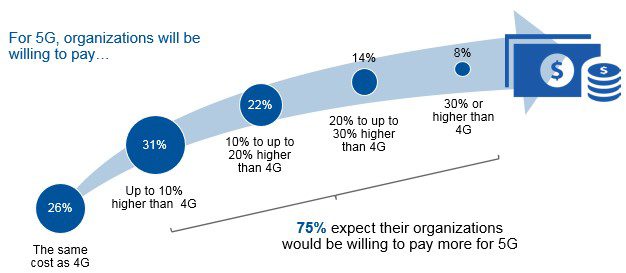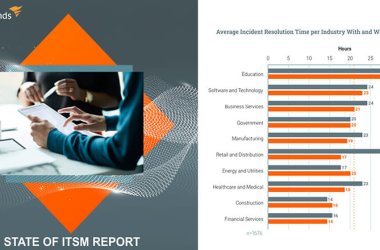A recent global Gartner survey has revealed that 75 percent of end-user organisations would be willing to pay more for 5G mobile capabilities, with only 24 percent of respondents unwilling to pay more for 5G than 4G.

“Those in the telecom industry are more likely to be prepared to pay more than those in other industries,” said Sylvain Fabre, research director at Gartner. “End-user organisations in the manufacturing, services and government sectors, for example, are less likely to be willing to pay a premium for 5G than telecom companies, which are willing to pay a 5G premium for their internal use.”
In addition to offering better prices for industries in which users are less convinced of the business benefits of 5G, communications service providers (CSPs) must create value propositions that entice customers to start 5G migration projects sooner.

Although most of the respondents think their organisations would be prepared to pay more for 5G, few (8 percent) expect 5G to deliver cost savings or increase revenues. 5G is seen principally as a network evolution (59 percent), and only secondarily as an enabler of digital business (37 percent). The survey also found that respondents from the telecom sector are less persuaded than those in other industries that 5G will be a revenue enhancer. “They tend to see 5G migration as a matter of gradual and inevitable infrastructural change, rather than as an opportunity to generate new revenue,” added Fabre.
The survey found that almost half the respondents intend to use 5G to access videos and fixed wireless capabilities. More interestingly, though, the majority of respondents (57 percent) believe that their organisation’s main intention is to use 5G to drive Internet of Things (IoT) communication.
“This finding is surprising, as the number of deployed ‘things’ that need cellular connectivity won’t exceed the capacity of existing cellular IoT technologies before 2023 in most regions,” said Fabre. “And even once fully implemented, 5G will suit only a narrow subset of IoT use cases that require a combination of very high data rates and very low latency. In addition, 5G won’t be ready to support massive machine-type communications, or ultra-reliable and low-latency communications, until early 2020.”
A degree of misunderstanding is probably also apparent in the expressed belief by a large majority of the respondents (84 percent) that 5G will be widely available by 2020. By contrast, CSPs’ plans indicate that wide availability may not be achieved before 2022.





